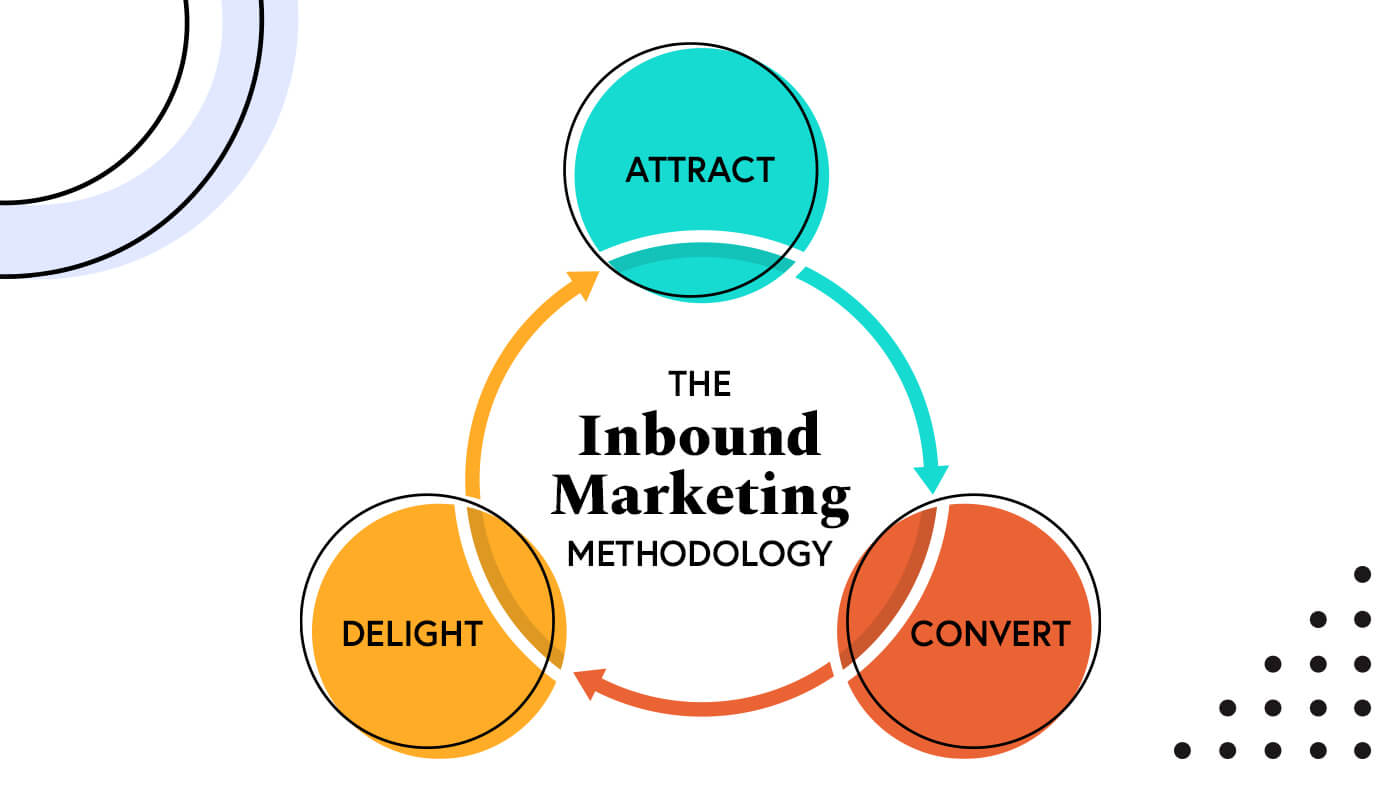Good businesses focus their attention on attracting prospects who may already be interested in what they are selling, instead of wasting time on those who are not remotely interested in what they offer. This strategy is called inbound marketing, and it provides a high return on investment for businesses of any kind.
What Is Inbound Marketing?
In the context of digital marketing, inbound marketing uses a combination of marketing channels like content marketing, SEO, opt-in emails, and social media to attract customers to your business. Rather than bombarding your audience with content they don’t necessarily want (i.e. cold calling or TV ads), inbound marketing provides valuable content that customers are already looking for, and solves problems they already have. A good way to distinguish between inbound marketing and outbound marketing: with inbound, you are pulling customers in with attractive content; with outbound, you are pushing out your offering to customers.

The Inbound Marketing Methodology
1. Attract
Attract your target market to your brand and your website with high-quality, compelling content that answers the questions they already have. This includes blogging, social media, and SEO.
2. Convert
Convert website visitors into qualified leads using optimized landing pages, forms and compelling calls-to-action. Give visitors premium content in exchange for their contact information, such as eBooks, whitepapers, webinars, case studies, checklists, and more. Transform these leads into new business by framing your product or service as the solution to their pain points.
3. Delight
Once a lead becomes a customer, don’t forget about them! Provide help to your customers and empower them with everything they need to succeed with their purchase. Encourage your customers to share their success story, which in turn will attract new prospects.
The goal is to turn the process of attracting, converting, and delighting into a self-sustaining loop, ultimately growing your business.
5 elements of a strong inbound marketing strategy

1. SEO
SEO is a critical part of inbound marketing strategy because it makes your business able to be found by potential customers on search engines. When your prospects have questions, they turn to search engines to find the answer to their problem. You want to be sure that they are finding your business, not your competitors! By utilizing SEO best practices, you can improve the visibility of your website by ranking higher on the search engine results page (SERP) for keywords relevant to your webpage. For tips on how to get started with SEO, check out this blog post.

2. PPC
Even though it is a paid tactic, PPC can still be considered as part of inbound marketing since paid ads can appear when a customer conducts a search in a search engine. In order to get the best results, you should be doing both SEO and PPC.

3. Content Marketing
Insightful, compelling content on the right channels is an incredibly effective way to attract potential customers, while continuing to entertain current ones. Whether it’s blogging, a video, infographics or an eBook, your content needs to stand out. The content should be highly shareable, engaging, and nice to look at. Unfortunately, regularly creating fresh content can be difficult and time consuming. Repurposing content (or repackaging it nicely into a new format) can help with this. Read more about repurposing your content here.

4. Social Media
Share and promote your content on social media to attract new customers. Do some research to find out which social platforms are relevant to your business, and tailor your content to the platform and your social audience. It may help to create a social media calendar to ensure you are posting consistently and purposefully!

5. Landing Pages
Another important element of inbound marketing strategy is your landing page, which is where your potential customers land after clicking on your call-to-action. Make sure your landing page is relevant to your call-to-action and optimized to encourage visitors to sign up, subscribe or buy. Create compelling copy for your landing page and offer something in exchange for their contact information, such as an eBook or whitepaper.
Benefits Of Inbound Marketing
In case you’re not convinced yet that inbound marketing can be incredibly valuable to your business, here’s a list of additional benefits inbound marketing can provide, if done right!
Reduced expense. Generate quality traffic by reaching the right audience in the right place at the right time. Instead of wasting time, effort and money in attracting all potential customers, focus on reaching relevant customers with a leaner, more focused advertising spend. Using inbound marketing, you can save money and experience higher ROI over time.
Higher trust and credibility. You can establish trust with your customers using inbound marketing strategies. By empowering customers to do their own research and find you organically, you’ll come across more trustworthy in comparison to an attention-grabbing billboard or cold-call. By creating helpful, genuine content, this frames your business as a reliable source — they’ll come to you when it’s time to purchase!
Reduced risk. Because your quality traffic comes from a variety of sources (organic search, social media and referrals), you can avoid shooting an arrow in the dark in hopes of hitting the target with one advertisement.
All in all, inbound marketing is a win-win — it provides value to your business AND the customer. If it’s not something you’re already doing, it sounds like it’s time to start!




